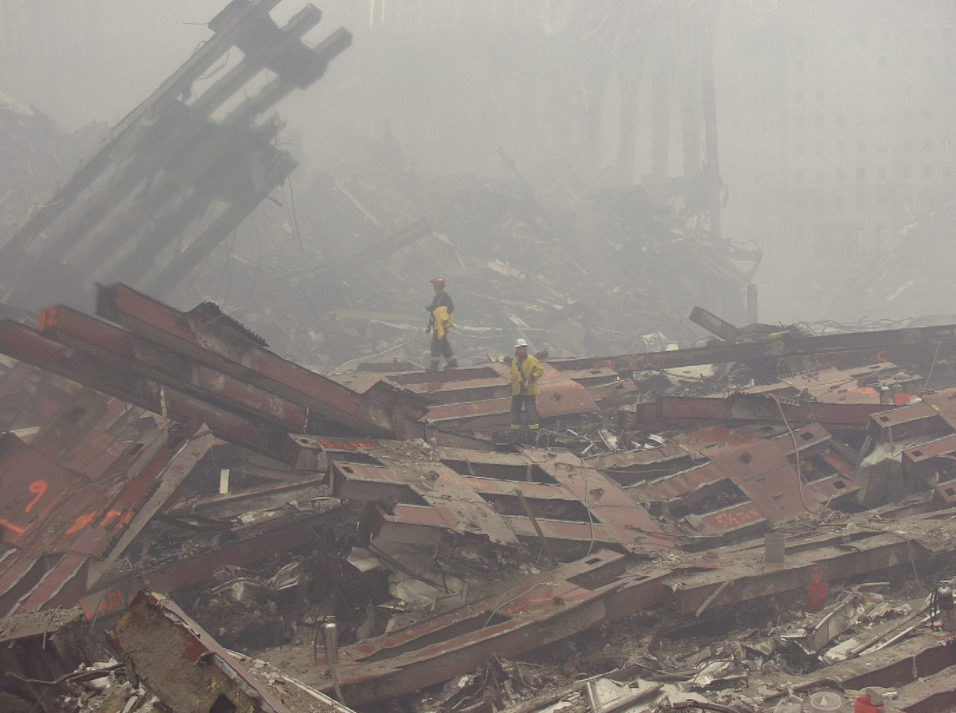


The Evolution of Terror: 6 Critical Threats 19 Years After 9/11
Bridget Johnson is the Managing Editor for Homeland Security Today. A veteran journalist whose news articles and analyses have run in dozens of news outlets across the globe, Bridget is a senior fellow specializing in terrorism analysis at the Haym Salomon Center. She writes in Homeland Security Today…
When the planes hit the Twin Towers, the Pentagon and a field in Shanksville, Pa., 19 years ago, it wasn’t the beginning of the war on terror but the advent of a more public-facing chapter in the global terror fight. After all, al-Qaeda left its calling card on the World Trade Center in 1993, killing seven and injuring more than a thousand people with a bomb in the underground parking garage. It wasn’t until 2001, though, that the terror group tried to take down the towers again — with an evolved and expanded plan that, over three locations, took 2,977 lives and injured thousands more.
In terrorist circles that now reach into every corner of the world via mountains of online propaganda and open-source tactic tutorials, the 9/11 attacks are still hailed as a gold standard of sorts — even ISIS propaganda periodically invokes al-Qaeda’s handiwork that day with 9/11 imagery while promising to similarly attack the United States. But as tactics evolved from the first World Trade Center bombing to the second, so have terror groups, independent cells, and lone extremists grown and evolved through mixing psychological and physical warfare, drawing from a diverse recruitment pool, moving operations including training into the virtual realm, picking softer targets and simple weapons that may inflict lower casualty counts but produce attacks that are harder to detect in the planning stages and cheaper to conduct, focusing on cyber operations and offering tech support to followers communicating online, and disseminating an endless stream of online materials that inspire, recruit, incite, and teach would-be attackers how to accomplish their mission.
What does the terror landscape look like on Sept. 11, 2020? There are some familiar faces as well as new threats keeping counter-extremism on its toes.

Al-Qaeda’s Latest Attack on the United States
Between the 18th and 19th anniversaries of the 9/11 attacks, there was another al-Qaeda attack on America — the perpetrator even visited the 9/11 Memorial in New York City on Thanksgiving weekend before the Dec. 6, 2019, attack.
Second Lieutenant Mohammed Saeed Alshamrani, a member of the Royal Saudi Air Force, was training at Pensacola Naval Air Station when he entered a building on the base, killed three and wounded eight. Alshamrani was killed about eight minutes after he started shooting; he was armed with a semi-automatic handgun with an extended magazine, several ammunition magazines, and about 180 rounds of ammunition. He legally purchased the gun months earlier under an exception that allows nonimmigrant visa holders to purchase weapons if they have a valid state hunting license. He posted a message on Sept. 11 stating that the countdown had begun.
In February, al-Qaeda in the Arabian Peninsula leader Qasim al-Raymi said the terror group directed Alshamrani to conduct the attack. U.S. officials later confirmed that the shooter had communicated with al-Qaeda multiple times before the attack, in which he discussed carrying out a “special operation” for the group. FBI Director Christopher Wray said that Alshamrani’s communications and coordination confirmed he was “more than inspired” by AQAP.
Nathan Sales, the State Department’s coordinator for counterterrorism, said last year that al-Qaeda “has been strategic and patient over the past several years” and is “as strong as it has ever been.” Former DHS officials said in the new Future of DHS Project report from the Atlantic Council’s Scowcroft Center for Strategy and Security that “the international terrorist threat from the Islamic State of Iraq and Syria (ISIS) and al-Qaeda has not gone away, and DHS needs to use the next two to three years to get ready for what is coming next.” AQAP’s Inspire magazine, still easily available online, remains a key reference for terrorists of all stripes because of its easy-to-follow instructions for attack preparation and execution.
For the rest, please click here.